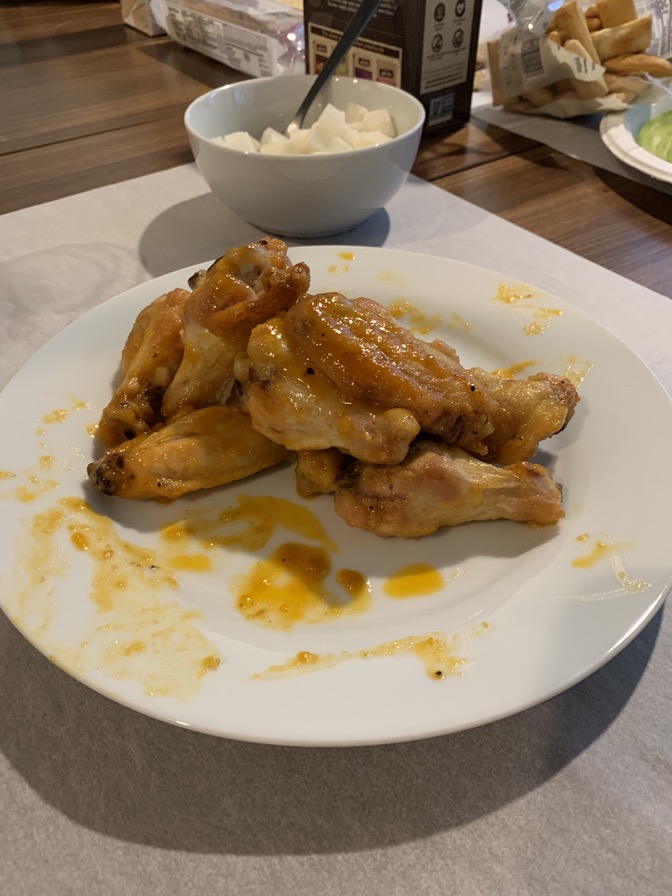Fermented Peppers Revisited
Wed, Feb 6, 2019
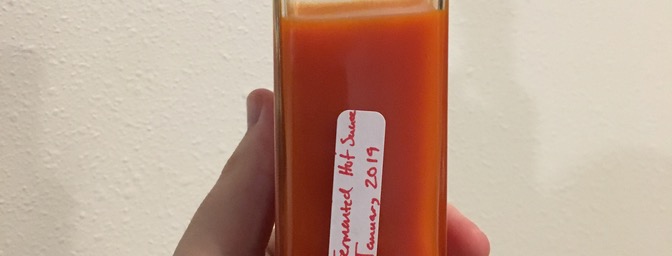
Recipes from this article
This follow-up to the fermented fresno peppers has been a long time coming. A lot has happened since we last checked in:
- The peppers finished their ferment.
- Their brine was extracted.
- The garlic and peppers were pureed and became hot sauce, pepper paste, and pepper flakes.
- The hot sauce became buffalo sauce for some Super Bowl wings.
Let’s get into it!
Processing the Peppers
A few weeks ago on the 24th, I cracked open the jar of peppers and strained out all the solids. I reserved the brine—some of that was for use in later processing, and the rest got bottled and put into the fridge. From the solids, I picked out the peppers and garlic cloves, leaving behind the bits of spices. I puréed the peppers and garlic with a little bit of the brine until I got a thin paste.
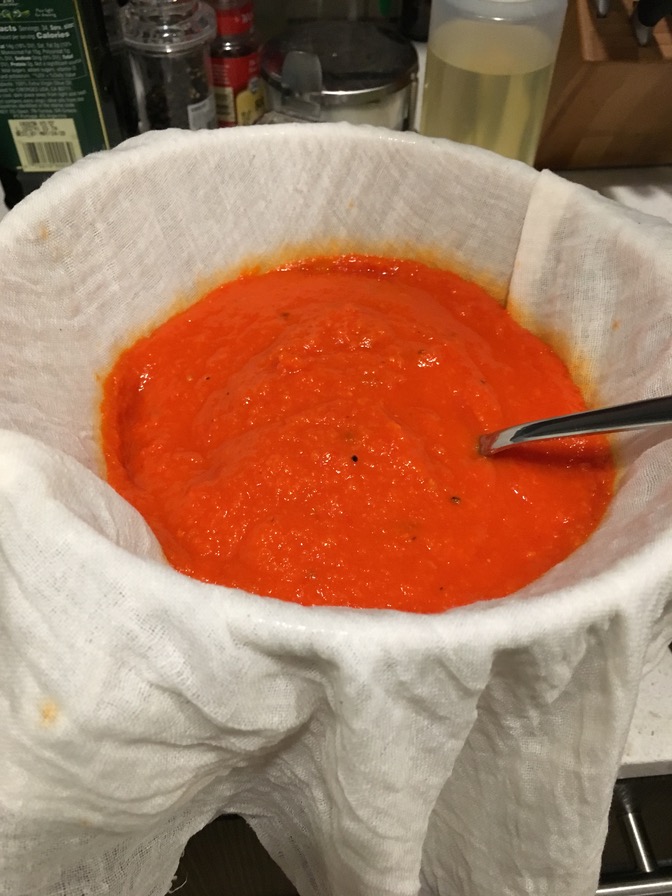
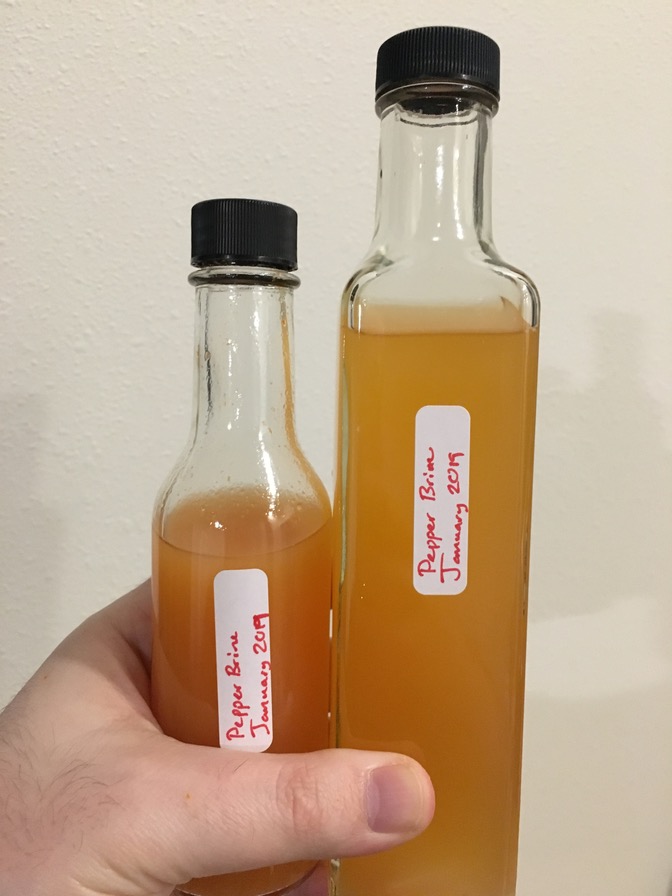
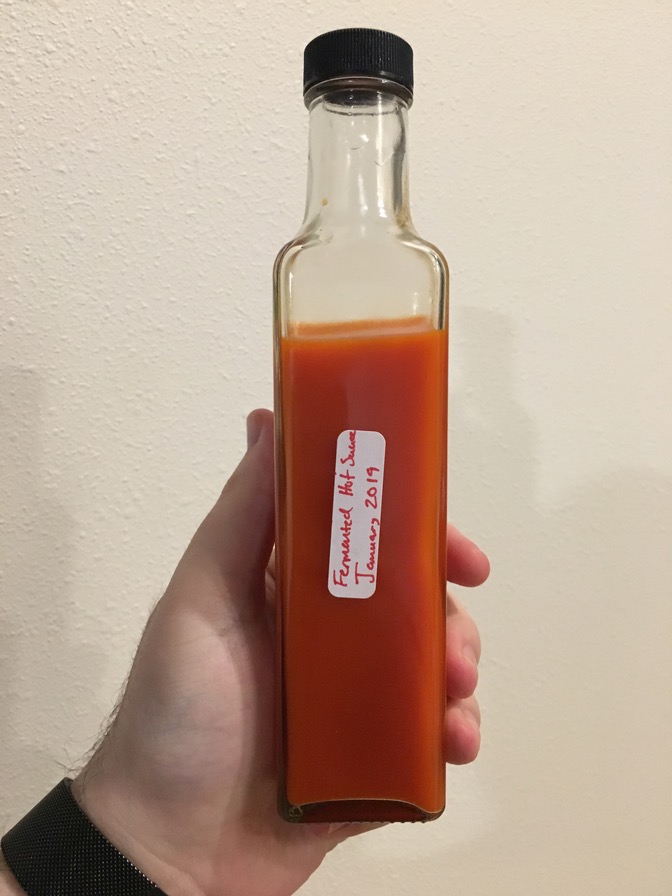
I then strained the purée through cheesecloth to yield some hot sauce and some much thicker paste. I jarred a little bit of that paste and threw it into the fridge for later, and the rest I spread out in a thin layer on a parchment-lined sheet pan.
That sheet pan spent around 4 hours in a low oven (as low as my oven would allow) until it was fully dried. In the future, I might see if I can track down a friend with a dehydrator, because using the oven was kind of a pain. I placed the dehydrated pepper paste into a mini chopper to reduce it to flakes. The result was … fine I guess. It was cool to have made my own pepper flakes, but I think the paste wound up tasting better and being easier to use.

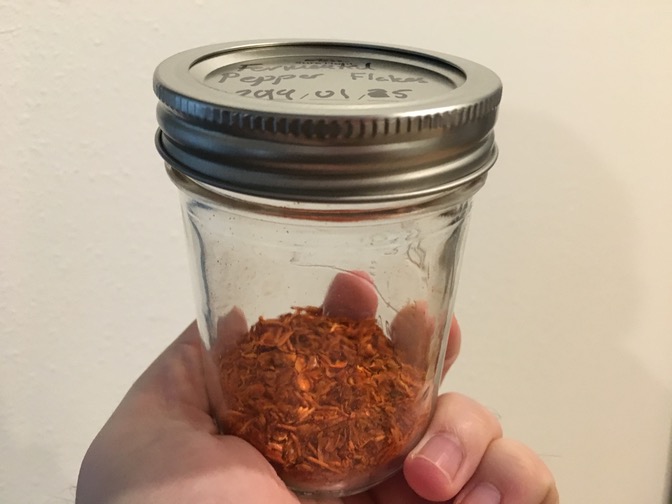
What a Superb Owl
Fast forward a little under two weeks, to Super Bowl Sunday. I generally don’t have a strong interest in the outcome of the game (this year was no exception), but I have a strong interest in having friends over an making a boatload of chicken wings.

First off: the form of the wings. I buy whole wings and break them down myself. Not only are the whole wings somewhat cheaper than the party-style wings (even accounting for the wing tips), but they’re not that hard to butcher, and the wing tips are super useful.
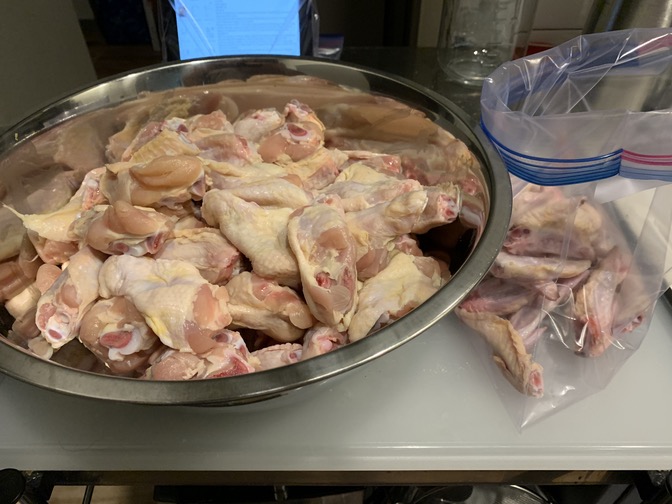
All it takes to disassemble a wing is to stretch it out, fit a sharp knife in the middle of the joint between the drum and the flat, then cut. Once that’s done, you can remove the wing tip from the flat in a similar manner. I like taking the tips off because they make amazing stock (and they’re less amazing as mere vehicles for buffalo sauce).
Roasted Chicken Wings
This recipe is one of very few ways I’ve found to get crispy skins on wings without deep-frying them. Note that the lack of a deep fryer doesn’t make these healthy per se, but it certainly makes the cleanup easier.
For a traditional buffalo-style sauce, try this.
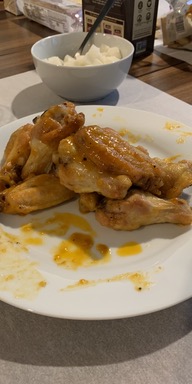
After the wings were butchered, I dusted them in the dry mixture and laid them in a pan in the fridge to dry for a few hours. Once folks started to show up for the game I began roasting them in batches. While the first batch was in the oven, I set to work making the sauce.
Buffalo Sauce
Basic buffalo-style wing sauce, with a little brown sugar to help it stick better to wings with no breading.
My favorite hot sauce to use is a homemade one using fermented peppers, but you can use whatever you like or have on hand.
The wings roasted and the sauce made, I combined the two and served them to my friends. Between the five of us, we made it through around 9 of the 11lbs of wings, so I’d call that a success.
